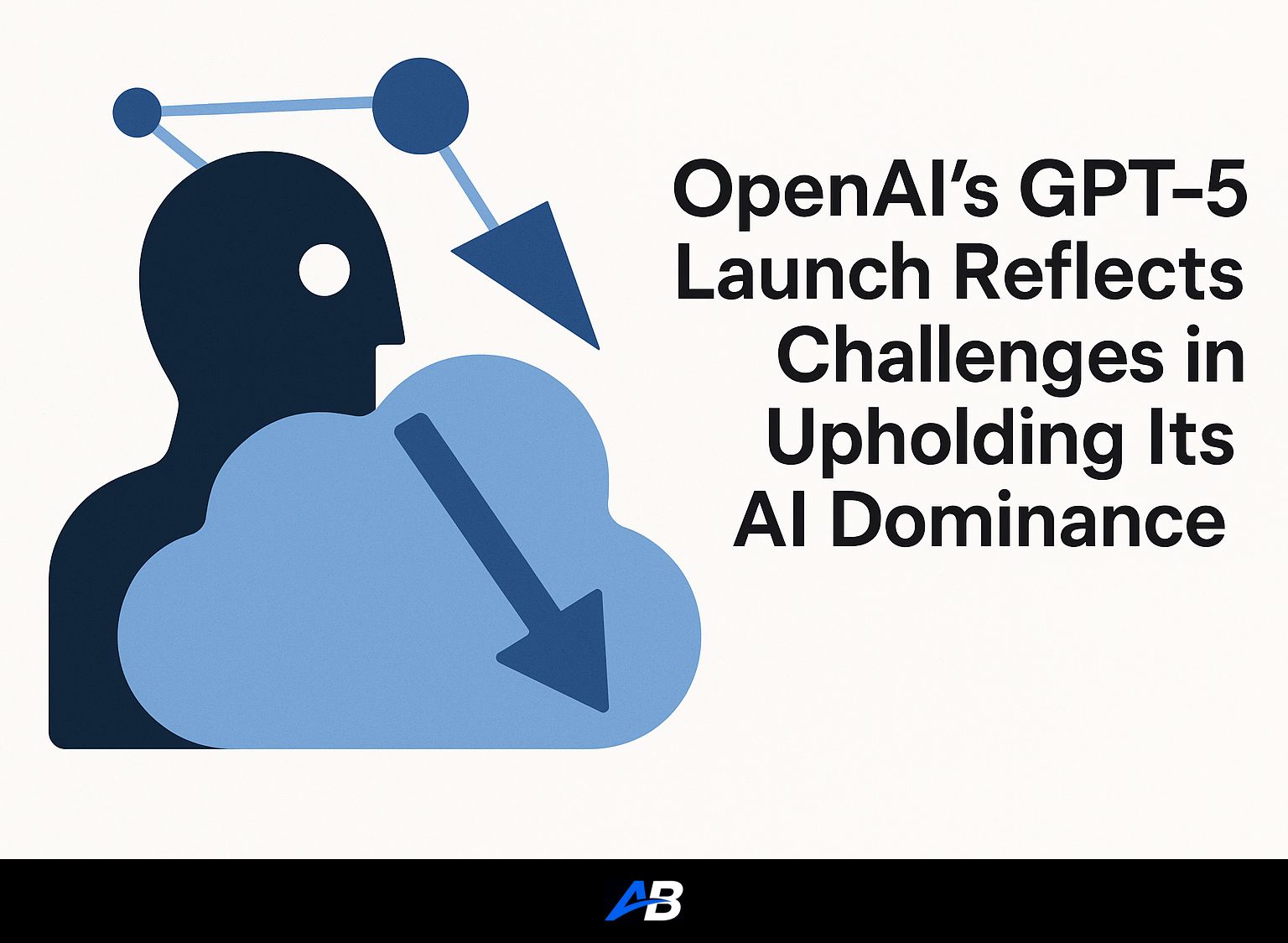
OpenAI’s recent launch of GPT-5 marks another chapter in its quest for AI dominance, but user reception highlights troublesome challenges with this highly anticipated model.
Short Summary:
- OpenAI’s GPT-5 features significant upgrades over its predecessor, yet user satisfaction reveals glaring flaws.
- CEO Sam Altman’s responses to user backlash emphasize AI’s role in mental health and emotional support.
- The introduction of customizable features and modes indicates a focus on personalization amidst growing competition.
The unveiling of OpenAI’s latest offering, GPT-5, showcases a significant advancement in artificial intelligence despite facing substantial scrutiny from its user base. Launched amidst much fanfare last week, the model promises to deliver enhanced capabilities in coding, mathematical problem-solving, and user interaction. However, early feedback suggests that this leap may be less impressive than anticipated, leaving users feeling disappointed and recalling their fondness for the predecessor, GPT-4.
OpenAI CEO Sam Altman heralded the new model as “the smartest AI model ever,” likening its proficiency to that of an array of PhD-level experts. He expressed that users could expect a virtual assistant with unparalleled capabilities. Yet, as the dust settles, many users are expressing discontent, reporting frequent glitches and a notable detachment in communication style, which contrasts with the much warmer persona exhibited by GPT-4.
One user reflected emotionally on their experience, declaring,
“Ever since they’ve been making their ‘updates’… I feel more alone than ever.”
This sentiment resonated with many who had previously developed virtual connections with AI, considering it a confidant or mentor. The community’s outcry has led OpenAI to reinstate access to GPT-4 for select users, albeit at a subscription cost, raising further discussions on the ethical implications of AI reliance in sensitive contexts.
The Most Notable Enhancements:
- Enhanced coding capabilities—GPT-5 is now reported to be the most adept version yet, achieving superior results in coding, including complex debugging and creating detailed applications from basic prompts.
- Improved performance in health-related inquiries demonstrates a heightened ability to assist users with relevant and contextual answers, validating its role in user health advocacy.
- The introduction of various operational modes—Auto, Fast, and Thinking—not only caters to users’ preferences but also signifies a shift towards user-centered customization.
Moreover, OpenAI has implemented significant improvements to the coding capabilities in GPT-5. Developers have witnessed the model’s transformative ability to craft websites and applications with a superior aesthetic sense and functional precision, evidenced by its ability to output engaging applications in a streamlined manner. On this front, early testers have claimed success in complex projects just with simple prompts.
In the realm of health inquiries, GPT-5 offers a more nuanced understanding, achieving higher marks on assessments defined by health professionals. Customers report feeling more empowered when engaging with the model, interpreting it as a supportive partner in making informed health decisions rather than a mere informational tool. Yet, it is critical to note that GPT-5, while a formidable assistant, is not a substitute for professional medical advice.
The implementation of various operational modes allows users to choose between “Auto,” “Fast,” or “Thinking,” with each mode catering to different needs based on the context of use. Altman indicated that these offerings aim to blend speed with in-depth analysis, promising to enhance user experience significantly.
However, the juxtaposition of these groundbreaking capabilities with user complaints has painted a complex picture of GPT-5’s rollout. Many have criticized the implementation for lacking character, expressing disappointment at what they perceive as a regression in emotional connectivity. The user feedback has prompted Altman to acknowledge and address these sensitivities, declaring an intention to elevate the model’s warmth.
Throughout the backlash, Altman defended the company’s responsibility for ensuring that users do not confuse AI interaction with genuine companionship, suggesting that a cautious approach is necessary in AI’s role in emotional support. He highlighted the need for users to engage with AI responsibly, stating,
“We do not want the AI to reinforce self-destructive patterns.”
OpenAI’s commitment to enhancing user satisfaction is evident through its ongoing tweaks and improvements. Altman reaffirmed that feedback from the user community is critical in shaping future updates to maintain a balance between AI functionality and user companionship.
The Battle for AI Dominance:
As the competitive landscape for AI continues to expand, OpenAI finds itself in a race against formidable rivals. Companies like Anthropic and Google have risen with models that not only meet but occasionally exceed the capabilities of GPT-5. The pressure to innovate while ensuring stability remains paramount in this fast-evolving domain.
Looking forward, OpenAI’s strategy appears to hinge on personalized user experience. There’s a growing trend in the industry to enable users to tailor AI interactions according to individual preferences, which enhances both engagement and satisfaction levels. As Altman articulated, organizations prioritizing personalization experience greater success; thus, enhancing user AI experiences seems to be an inevitable pathway.
Conclusion:
In conclusion, OpenAI’s launch of GPT-5 signifies a major escalation in their quest for leadership in artificial intelligence. The advancements in coding capability, improved health interactions, and user-customizable features offer substantive improvements, however, user dissatisfaction points to daunting challenges ahead. Continued evolution of AI, ensuring emotional intelligence while meeting technical demands, presents a balancing act that companies must navigate carefully. With user dependence on these models becoming ever more explicit, the stakes are high, making it imperative that OpenAI and its contemporaries address these concerns holistically.
For more information on AI developments and how to leverage tools like Autoblogging.ai for creating optimized SEO articles, visit our Latest AI News section.
Do you need SEO Optimized AI Articles?
Autoblogging.ai is built by SEOs, for SEOs!
Get 30 article credits!


